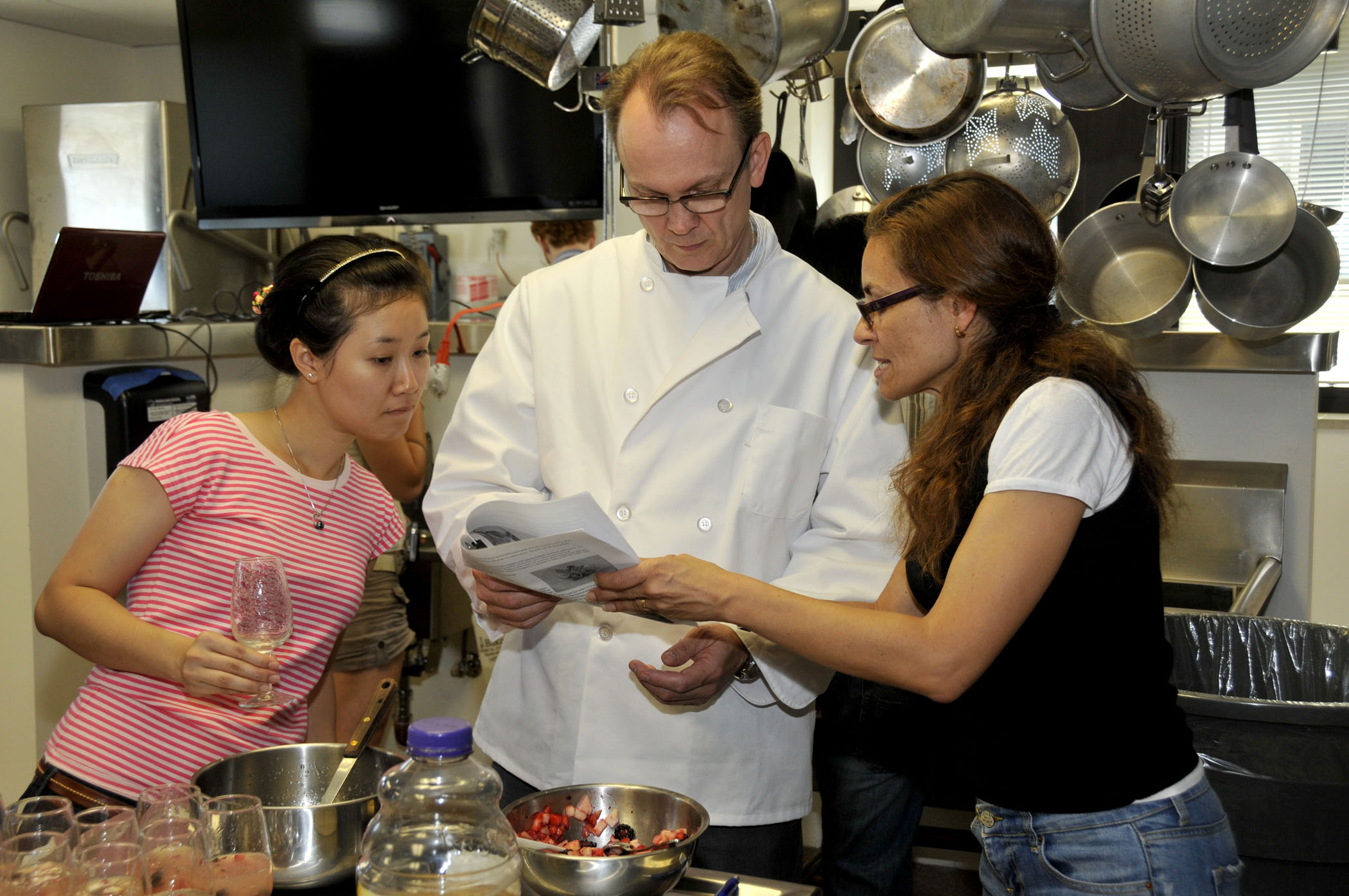
FAYETTEVILLE, Ark. – Area chefs and other students of culinary arts and sciences learned to make melon caviar and other novel dishes using techniques such as spherification at a molecular gastronomy workshop June 8-15 in the Culinary Laboratory kitchen in the Home Economics Building.
Purificación Garcia Segovia, a food science professor from Universidad Politécnica de Valencia in Spain, taught the workshop as a visiting scholar in the hospitality and restaurant management program in Dale Bumpers College of Agricultural, Food and Life Sciences.
Professor Robert Harrington said he will incorporate the techniques in courses such as "Food and Wine" fall semester. Hospitality and restaurant management is a concentration in the food, human nutrition and hospitality major in Bumpers College's School of Human Environmental Sciences. The college also offers a major in food science, whose students and faculty members also participated in the workshop.
Segovia said texturing techniques apply scientific principles and tools to designing new dishes with unique textures.
"Texture manipulation is a key technique in the Modernist kitchen as an enhancement that intensifies the ultimate enjoyment of a presentation," Segovia said.
Spherification is controlled gelification of a liquid containing sodium alginate that forms spheres of different sizes when submerged in a calcium bath. The reaction can be controlled to determine the size of spheres formed.
Segovia said the techniques allow cooks to apply physics and chemistry technology to create new presentations of food. Some specialized equipment is required, which is available in affordable kits designed for home kitchens, she said.
Consumers should not be alarmed by the long names of some ingredients used in molecular gastronomy because they are from natural sources, Segovia said. Sodium alginate is from algae. Others include kappa carrageenan, xanthium gum, tapioca maltodextrin, gelatin and soy lecithin.
As editor in chief of the Journal of Culinary Science and Technology, Harrington added a section on molecular gastronomy, which is broadly defined as the application of science to cooking. A history of the discipline is provided in Molecular Gastronomy in France, by Hervé This, in Vol. 9, No. 3, of the journal.
Molecular gastronomy techniques as practiced by many chefs were pioneered by French physicist Hervé This and British food scientist Nicholas Kurti starting about 1988, Harrington said.
Kurti is famously quoted as saying: "I think it is a sad reflection on our civilization that while we can and do measure the temperature in the atmosphere of Venus we do not know what goes on inside our soufflés."
Topics
Contacts
Howell Medders, Coordinator
AGCS
575-5647, hmedders@uark.edu